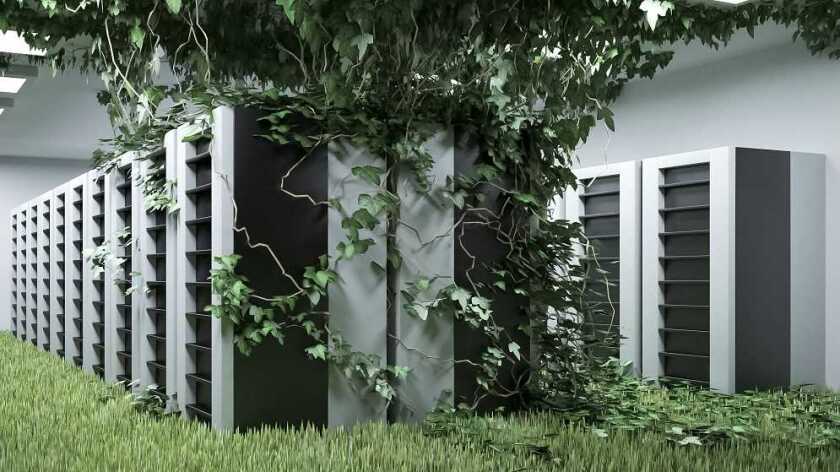In June 2019, the UK became the first major economy in the world to pass legislation guaranteeing an end to its contribution to global warming and requiring the UK to bring all greenhouse gas emissions to net zero by 2050. In response to this the government announced at last year’s budget that it would remove the entitlement to use red diesel and rebated biodiesel from most sectors from April 2022 to help meet its climate change and air quality targets. This forms part of a commitment to tackle climate change, ensure that businesses pay fairly for the harmful emissions they produce and incentivise them to improve their energy efficiency.
These policies have major implications for the datacentre sector which relies heavily on diesel generators to provide emergency backup power and has caused some organisations to look at removing diesel generators altogether. These changes are coming as the industry is facing significant growth in demand, and when the need for resilience and security has never been higher.
At Keysource we have been working within the industry to prepare for these changes. We know that Government legislation is coming and there has been some fantastic work by people like Emma Fryer, Associate Director of data centres at trade association body TechUK. She feels that diesel generator carbon emissions are a “real red herring” because of how rarely they are switched on, but adds that they can reduce local air quality around the datacentre location due to the release of pollutants such as Oxides of Nitrogen (NOx).
Given that the data centre industry is responsible for between 2-3% of global power consumption and uses chemicals to sustain operation, I think it is right we are targeted and mandated to reduce our carbon impact. This is further compounded by being one of the fast-growing industries as a result of digitalisation, and the uptake in capacity in the UK and globally, which present a great opportunity to innovate and use technology to have a lasting impact.
What are the big players doing?
In July 2020 Microsoft announced its plans to eliminate its reliance on diesel fuel by the year 2030 as part of its goal to be carbon negative. Microsoft has been working for years to develop effective alternatives to diesel generators, citing the need to make its data centres more sustainable and less reliant on the utility grid. The focus now seems to be on either replacing its generators with cleaner technologies, or eliminating them altogether by managing resiliency through software.
Microsoft chief environmental officer, Lucas Joppa, stated: “While diesel fuel accounts for less than 1% of our overall emissions, we believe it’s important to help accelerate the global transition away from fossil fuels. We’re charting a new course using low-carbon fuel sources, including hydrogen and energy storage.”
Google has also committed to powering all its data centres with renewable energy around the clock by 2030. They will be launching a pilot at its data centre campus in Belgium trialling lithium-ion batteries instead of a diesel generator as power backup for 3MW of live, production computing load. They hope to demonstrate that batteries are a viable replacement for traditional data centre backup generators, and that a data centre outfitted with a large-scale energy storage plant can help balance its local electrical grid.
They believe that data centres could “anchor carbon-free electric grids.” Currently data centres store a lot of energy on-site for backup. Storing it in the form of diesel fuel and discharging it only when there’s a utility outage means the energy sits idle for almost 100% of the time. A grid powered by renewables could use data centres connected to it to store excess renewable energy and discharge it at times when there isn’t enough renewable energy being generated.
According to the Uptime Institute, when Microsoft, Google and others speak of reducing their reliance on generators, they are mostly referring to the extensive use of alternative power sources. But the holy grail for the hyperscale operators, and even smaller clusters of data centres, is to use availability zones, traffic switching, replication, load management and management software to rapidly re-configure if a data centre loses power.
Such architectures are proving effective to a point, but they are expensive, complex and far from fail-safe. Even with full replication, the loss of an entire data centre cannot but cause performance problems. For this reason, all the major operators continue to build data centres with concurrent maintainability and on-site power at the data centre level.
Is battery storage a viable alternative?
On 23 June 2021 the UK’s first grid-scale battery storage system directly connected to the electricity transmission network was activated in Oxford. In the same year Harvard researchers designed a long-lasting, stable, solid-state lithium battery. At Keysource we believe that this could be a real game changer with a key feature being quicker charging time.
Quicker charging times potentially overcome a key limitation of battery storage for data centres allowing researchers to deliver a battery autonomy which can be maintained more sustainably.
As well as the development of new technologies, Emma Fryer from TechUK believes that there are also opportunities to leverage countries such as Amsterdam and Norway which benefit from ‘low carbon’ (nuclear) and renewable energy sources such as hydro and wind power. There has also been a trail of datacentres in the Pacific North-West region of the US because it has cheap, abundant hydro power. The challenge here is to provide highly available and secure IT services, whilst leveraging low carbon and renewable energy sources.
Certainly gas fuel cells and lithium-ion batteries are two alternatives to diesel backup generators currently being considered. Today there are several large fuel cell implementations at data centre sites, but many of them are used to supplement grid energy. However, an eBay data centre in Utah is currently using fuel cells as a sole energy source and relies on the utility grid instead of generators for backup.
Our company research found that almost every operator would like to eliminate generators and replace them with a more modern, cleaner technology. In simple terms diesel generators are dirty - they emit both carbon dioxide and particulates, which means regulation and operating restrictions. They are expensive to buy; they are idle most of the time; and they have an operational overhead in terms of testing, regulatory conformity, and fuel management.
However, no other technology so effectively combines low operating costs, energy density, reliability, local control and, as long as fuel can be delivered, open-ended continuous power. But despite these apparent benefits the combination of newer technologies, such as fuel cells, lithium-ion batteries and a lot of management software is looking much more positive. In fact, even where generators are not eliminated entirely we expect more projects from 2020 onward will involve significantly less generator cover.
Incentivise energy efficiency
In conclusion the UK government will continue to incentivise organisations to improve their energy efficiency and it’s clear that whether an end user, operator or managed services provider there are opportunities in the market today which will make a positive impact.
The big opportunity is in the development of technology which will provide more economical and practical choices across application, software, hardware and location. The challenge will be how to create a feasible road map for transition considering existing investment, current challenges and targets within the customer respective organisations. As a country we need to holistically consider the operational requirements of business technology and consider the technical and commercial impacts to current available operating models. This movement presents a huge opportunity to not only be a more sustainable economy and positively impact climate change, but also to create technically advanced solutions which provide competitive edge without compromise to what’s important.





